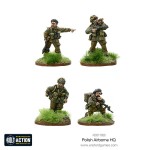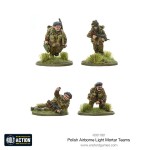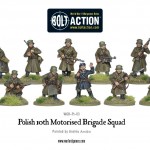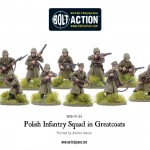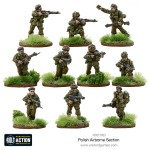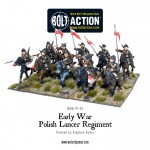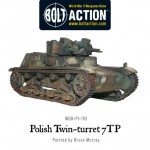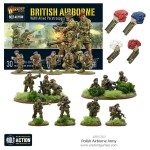Greg Dryanski is educating us all with the Warsaw Uprising in 1944 with a 4-part series, starting with: Planning a Revolt!
At 5PM on August 1st, 1944, the streets of Warsaw erupted in gunfire. While the Germans had been hearing rumours of impending insurgent activity for weeks, the sheer size of the uprising caught the Germans unprepared. The largest urban uprising of World War II raged for the next 63 days, causing significant casualties to both sides, and almost totally obliterating a major European city.
The Foundations of the Revolt
The seeds of the Uprising can be traced back to 1939, following the invasion and dismemberment of Poland by the Germans and the Soviets. Occupation was extremely difficult for Poland; and Warsaw, especially, had been targeted by the Germans. All schools, libraries and museums were closed, and the Polish language was forbidden to be spoken in public. Street roundups of citizens, followed by mass executions, became common. In response, the Poles revived their underground system which had previously been active during the revolts in 1794, 1831, 1863 and 1918. Multiple armed resistance movements were quickly formed and united by the Polish Government-in-Exile in England into the Polish Home Army (Armia Krajowa or AK). All members of the AK were called by their pseudonyms to prevent German reprisals on family members.
By 1943 Polish political relations with the Allies had deteriorated due to decisions of Teheran and Yalta, and because the Soviets broke off relations with the Polish Government-in-Exile in 1943 over the Katyn Massacre. The Poles did not want the Soviets to dictate how their future government would be structured.
The Soviets, for their part, had already established an alternate Polish provisional government in Lublin. They were already disarming the AK troops in eastern Poland, after the AK helped them defeat the Germans. The enlisted men were being forced into the Soviet army, while the officers were either shot or sent to Siberia.
Preparations for Revolt
The Germans were rapidly retreating through Warsaw in the wake of Operation Bagration and the defeat of Army Group Center. Field Marshal Walter Model and Gen. Heinz Guderian were brought in to stabilize the front lines. The Soviets already had a bridgehead over the Vistula at Magnuszew, south of Warsaw, and Soviet artillery could clearly be heard in Warsaw in the days preceding the Uprising.
The Poles were concerned that if they delayed the Uprising, the Soviets would arrive in Warsaw, and claim that they had liberated the city. The Germans had demanded that 100,000 Varsovians assemble to construct barricades to defend “Festung Warschau” from the oncoming Russians. The Varsovians, meanwhile, were being encouraged to begin the Uprising by Soviet radio broadcasts in the Polish language, and air-dropped leaflets.
The Poles had a highly developed underground system, which employed many experienced individuals, including university professors in such subjects as chemistry, metallurgy and engineering. There was an extensive press service, with printing presses and photography support. They developed an underground hospital system, underground radio station (Radio Błyskawica) and weapon shops turning out SMGs (“Błyskawica”) and hand grenades. They had well-trained mechanics working in well-equipped shops, who could repair tanks and work with armor plating.
Operation “Tempest” (Akcja “Burza”) was finalized only in the last days of July 1944. The commander of the AK, Gen. Komarowski, did not set the time for the Uprising, called W-Hour (Godzina [hour] W, from the word wybuch – “explosion”) until July 31. This left very little time to get the order to the widely separated battalions, especially with the German-imposed night curfew.
Dramatis Personae
Polish
General Tadeusz Komorowski (“Bór”)
The Commander of the AK, he had only been in command for a year, following the arrest of his predecessor. He was a traditional Polish soldier and his tactics were hampered by old-fashioned thinking.

General Tadeusz Komorowski (“Bór”)
Brigadier General Antoni Chrusciel (“Monter”)
The commander of the Warsaw Detachment of the AK. He was a tough and stubborn infantry leader who refused to give in to the inevitable.
Lieutenant Colonel Jan Mazurkiewicz (Radosław)
Second in command of KeDyw (Kierownictwo Dywersji [Directorate for Diversion]). He was appointed the commander of Radosław Group shortly before the Uprising. Known as one of the best tacticians in the AK.

Lieutenant Colonel Jan Mazurkiewicz (Radosław)
German
Henrich Himmler – Reichsführer SS
He, along with Hitler, devised the plan to erase Warsaw and its population from the map. Hitler gave him full control of the operation, and he ordered the mass execution of all inhabitants of Warsaw.
SS – Obergruppenführer Erich von dem Bach- Zelewski
A Kaszub, from Northern Poland. He dropped “Zelewski” from his name when it became a political liability. He was the commander of a unit responsible for the mass murder of 35,000 civilians in Riga and more than 200,000 in Belarus and eastern Poland in July 1943. Himmler placed him in command of all troops, SS and Wehrmacht, in Warsaw on Aug. 2, 1944.

SS – Obergruppenführer Erich von dem Bach- Zelewski
Gen. Maj. Reiner Stahel
Previously, the military commander of Rome and Vilnius, he was appointed military commander of Warsaw in July of 1944 with his HQ in the Bruhle Palace in the centre of Warsaw. The revolt began 2 days after his arrival.
SS-Brigadeführer Heinz Reinefarth
Was put in command of an ad-hoc SS-police unit dubbed Kampfgruppe Reinefarth. He was responsible for the organized, violent repression of Poles and other nationalities.
SS – Oberführer d.R. Oskar Dirlewanger
The commander of Sonderregiment Dirlewanger, an anti-partisan unit of ex-criminals, felons and deserters. He has been described as “a psychopathic killer” by Steven Zaloga. Richard Lukas (Forgotten Holocaust) described Dirlewanger as “a sadist whose brutality was well known … one of those degenerates who, in saner days, would have been court-martialed out of the German army.”

SS – Oberführer d.R. Oskar Dirlewanger
SS-Brigadekommandeur Borislaw Kaminsky
The commander of the SS Sturmbrigade R.O.N.A. – anti-Soviet Ukrainians and Russians working with the Nazis. They were previously involved in anti-partisan operations in Belarus. R.O.N.A. – Russkaya Osvoboditelnaya Narodnaya Armiya.

SS-Brigadekommandeur Borislaw Kaminsky
Stay tuned for part 2…
Rise up and take Poland back!

